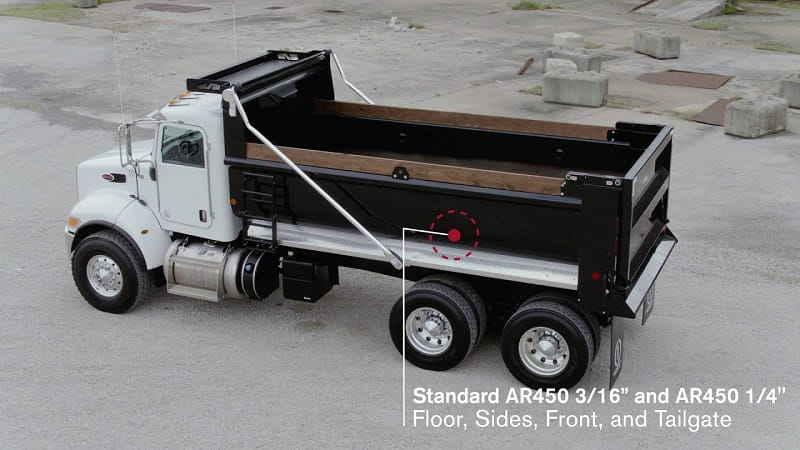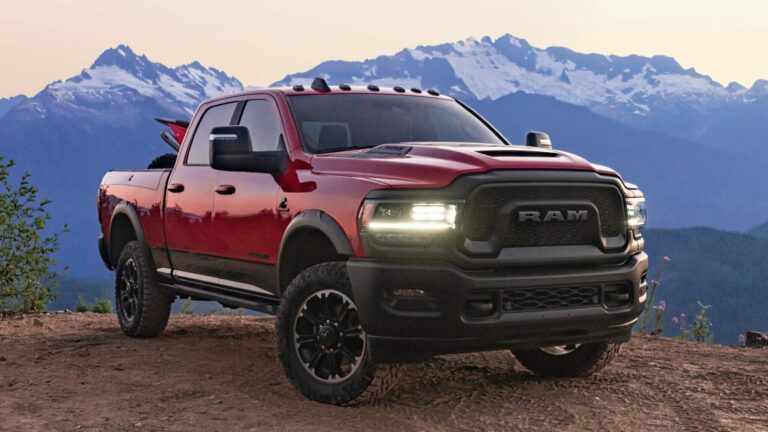How Many Cubic Yards In A Dump Truck: A Comprehensive Guide to Capacity and Calculation
How Many Cubic Yards In A Dump Truck: A Comprehensive Guide to Capacity and Calculation cars.truckstrend.com
When embarking on any construction, landscaping, or large-scale material hauling project, one of the most critical questions you’ll face is: "How many cubic yards in a dump truck?" Understanding dump truck capacities is not merely a matter of curiosity; it’s fundamental to accurate budgeting, efficient material ordering, streamlined project timelines, and preventing costly over- or under-deliveries. This comprehensive guide will demystify dump truck capacities, helping you make informed decisions for your next endeavor.
Understanding Cubic Yards and Dump Truck Capacity
How Many Cubic Yards In A Dump Truck: A Comprehensive Guide to Capacity and Calculation
Before diving into specific truck sizes, let’s clarify the core unit of measurement: the cubic yard.
What is a Cubic Yard?
A cubic yard is a unit of volume equal to the volume of a cube with sides one yard (or three feet) in length.
- 1 Cubic Yard = 3 feet x 3 feet x 3 feet = 27 cubic feet.
This standard measurement allows for consistent pricing and ordering of bulk materials like dirt, gravel, sand, mulch, and concrete. However, simply knowing the volume doesn’t tell the whole story of what a dump truck can carry.
Factors Affecting Dump Truck Capacity

The actual amount of material a dump truck can haul is influenced by several crucial factors beyond its theoretical volume capacity:
- Truck Size and Type: As we’ll explore, dump trucks come in various configurations, from small single-axle units to massive articulated haulers, each with vastly different volumetric capacities.
- Material Density: This is perhaps the most critical factor. A dump truck has both a volume capacity (how much space it has) and a weight capacity (how much weight it can legally and safely carry).
- Light Materials: Mulch, topsoil, wood chips, and some aggregates are relatively light. A truck hauling these might reach its volumetric capacity (be full to the brim) before it reaches its weight limit.
- Heavy Materials: Wet sand, gravel, asphalt, concrete rubble, and dense rock are heavy. A truck hauling these might reach its weight limit long before it looks "full." For instance, a truck rated for 15 cubic yards of light material might only be able to carry 8-10 cubic yards of wet sand due to weight restrictions.

- Legal Load Limits (GVWR): Every commercial vehicle has a Gross Vehicle Weight Rating (GVWR) and specific axle weight limits mandated by local, state, and federal regulations. Exceeding these limits is illegal, unsafe, and can result in hefty fines. Professional haulers strictly adhere to these.
- Load Type (Struck vs. Heaped):

- Struck Load: This refers to the volume of material that can be carried when the material is level with the top of the truck bed (not piled above the sides). This is often the manufacturer’s stated capacity.
- Heaped Load: This refers to the volume when material is piled above the sides of the truck bed in a cone shape. While some materials can be heaped, it’s limited by safety, spillage, and overall weight. Most standard capacities refer to struck loads or slightly heaped loads that remain within safe operating parameters.
Common Dump Truck Types and Their Capacities
Dump trucks are categorized by their axle configuration and intended use, directly impacting their cubic yard capacity.
-
Single Axle Dump Truck (Light Duty)
- Description: A smaller dump truck with one axle at the rear. Often used for residential or light commercial projects.
- Typical Cubic Yard Capacity: 5 to 8 cubic yards.
- Use Cases: Delivering small quantities of mulch, topsoil, sand, or gravel for home landscaping, small cleanouts, or light construction work.
- Considerations: Limited by weight, often struggles with very heavy materials. Good for navigating tighter residential streets.
-
Tandem Axle Dump Truck (Standard Duty)
- Description: The most common type of dump truck, featuring two axles at the rear. This design distributes weight more effectively, allowing for higher capacities.
- Typical Cubic Yard Capacity: 10 to 16 cubic yards.
- Use Cases: The workhorse of the construction and landscaping industries. Ideal for delivering moderate to large quantities of gravel, dirt, sand, asphalt, and other aggregates for commercial projects, road work, or larger residential developments.
- Considerations: Balances capacity with maneuverability. The go-to choice for many suppliers.
-
Tri-Axle Dump Truck (Heavy Duty)
- Description: Similar to a tandem axle truck but with three axles at the rear, providing even greater weight distribution and payload capacity.
- Typical Cubic Yard Capacity: 15 to 22 cubic yards.
- Use Cases: Hauling heavier materials like dense rock, concrete rubble, or large volumes of aggregate for major construction projects, quarry operations, or large-scale earthmoving.
- Considerations: Less maneuverable than tandem axles, requires more space for turning and dumping.
-
Semi-Dump Truck / End Dump Trailer
- Description: A tractor unit pulling a large, open-box trailer that lifts to dump material out the back. These are designed for maximum hauling capacity over longer distances.
- Typical Cubic Yard Capacity: 20 to 28 cubic yards (sometimes up to 40+ for specialized applications).
- Use Cases: Long-haul transportation of bulk materials for large infrastructure projects, mining operations, or delivering materials from quarries to distant job sites.
- Considerations: Not suitable for tight spaces. Requires significant clearance for dumping.
-
Articulated Dump Truck (Off-Road / Artic Dumps)
- Description: A large, heavy-duty dump truck with a hinged chassis that allows the front and rear sections to move independently. Designed for extreme off-road conditions.
- Typical Cubic Yard Capacity: 20 to 40+ cubic yards.
- Use Cases: Mining, quarrying, large-scale earthmoving, and heavy construction in challenging terrains where conventional dump trucks cannot operate effectively.
- Considerations: Very large, slow, and designed purely for off-road environments. Not street legal for public roads without special permits.
Practical Considerations for Calculating and Ordering
Knowing the capacities is one thing; applying that knowledge to your specific project is another.
How to Estimate Your Needs
-
Measure Your Area: For rectangular areas, measure the Length (L), Width (W), and Depth (D) of the area you need to fill, all in feet.
- Cubic Feet Needed = L x W x D
- Cubic Yards Needed = (L x W x D) / 27
- Example: A 20ft x 10ft area that needs to be filled 1ft deep: (20 10 1) / 27 = 200 / 27 ≈ 7.4 cubic yards.
-
Account for Material Compaction/Settling: Some materials, especially loose dirt or gravel, will compact over time or with activity. You might need to order 5-10% more than your initial calculation to achieve the desired final depth.
-
Add a Buffer: It’s often wise to order a small amount extra (e.g., 5-10%) to account for spills, uneven areas, or slight miscalculations. Running short can be more costly due to minimum delivery charges for small top-up orders.
Communicating with Suppliers/Haulers
When ordering, clear communication is paramount:
- Specify Material Type: Always state the exact material (e.g., "1-inch crushed gravel," "screened topsoil," "playground mulch"). This helps them determine the appropriate truck and calculate the weight.
- Confirm Truck Size and Capacity: Ask the supplier what size truck they typically use for your order size and what its capacity is for that specific material.
- Clarify Pricing: Understand if pricing is by volume (per cubic yard) or by weight (per ton). For heavy materials, pricing by ton is common and often more accurate.
Weight vs. Volume – The Critical Difference
This cannot be stressed enough. A dump truck’s practical capacity is always limited by the lesser of its volume or weight capacity for the specific material being hauled.
- Example 1 (Light Material): You need 15 cubic yards of shredded bark mulch. A standard tandem axle truck (10-16 CY capacity) can likely carry this in one trip, as mulch is very light and the truck will reach its volume limit before its weight limit.
- Example 2 (Heavy Material): You need 15 cubic yards of wet sand. A standard tandem axle truck might only be able to carry 8-10 cubic yards of wet sand due to its weight. You might need two trips, or a larger tri-axle truck. Always confirm the tons per cubic yard for heavy materials with your supplier.
Tips for Efficient Material Handling
- Order Accurately: Over-ordering leads to wasted material and disposal costs; under-ordering leads to project delays and additional delivery fees.
- Prepare the Drop-Off Site: Ensure there’s a clear, level, and accessible area for the dump truck to maneuver and unload safely. Consider the truck’s height when raised to dump.
- Consider Access: Large trucks need significant turning radius and overhead clearance. Inform your supplier of any tight turns, narrow driveways, low wires, or tree branches.
- Understand Delivery Terms: Clarify if the quoted price includes delivery, if there are minimum order quantities, and what the cancellation or re-stocking fees are.
Estimated Dump Truck Capacity and Material Pricing Guide
Please note: The prices provided in this table are illustrative examples only. Actual prices vary significantly based on your geographic location, material type, supplier, fuel costs, delivery distance, and market demand. Always obtain a direct quote from your local supplier.
| Truck Type | Typical Cubic Yard Capacity (CY) | Common Materials Hauled (Examples) | Estimated Price Range (Per Load, Delivered) * | Notes |
|---|---|---|---|---|
| Single Axle Dump Truck | 5 – 8 CY | Mulch, Topsoil, Small Gravel Loads, Sand | $200 – $450 | Best for small residential projects; limited by weight for dense materials. |
| Tandem Axle Dump Truck | 10 – 16 CY | Gravel, Sand, Dirt, Asphalt, Crushed Stone, Moderate Mulch/Topsoil | $350 – $800 | Most common for general construction/landscaping; balances capacity and maneuverability. |
| Tri-Axle Dump Truck | 15 – 22 CY | Heavy Aggregates, Large Rock, Concrete Rubble, Large Dirt Loads | $500 – $1200 | Ideal for heavier materials and larger volumes; less maneuverable. |
| Semi-Dump Trailer | 20 – 28 CY (or more) | Bulk Aggregates, Sand, Dirt, Grain, Large-scale material transport | $700 – $1500+ | Max capacity for long-distance hauling; requires significant space for dumping. Often priced by the ton for heavy materials. |
| Articulated Dump Truck | 20 – 40+ CY | Mining overburden, Quarry rock, Heavy Earthmoving | N/A (Project-based rental, not per load) | Off-road use only; typically rented by the hour/day for large-scale operations. |
Disclaimer: These are estimated ranges for a single delivered load. Prices can fluctuate wildly based on location, material availability, fuel costs, and specific supplier rates. Always get a direct quote.
Frequently Asked Questions (FAQ)
Q1: Is a cubic yard always the same size?
A1: Yes, a cubic yard is a fixed unit of volume (27 cubic feet). However, the amount of material (in terms of weight or usability) that fits into a cubic yard can vary greatly depending on its density, moisture content, and how tightly it packs.
Q2: Can I get half a truckload?
A2: Generally, no. Most bulk material suppliers charge per full truckload, even if you only need a portion. The cost of fuel, driver time, and truck operation remains largely the same whether the truck is half-empty or full. It’s usually more cost-effective to get a full load and find a use for any excess or share with a neighbor.
Q3: How do I know if my material is heavy or light?
A3: As a rule of thumb:
- Light: Mulch, wood chips, shredded bark, lightweight topsoil, peat moss.
- Medium: Dry sand, gravel, screened dirt, crushed stone (e.g., 5/8" minus).
- Heavy: Wet sand, wet dirt/clay, large rocks, concrete rubble, asphalt millings, dense gravel (e.g., 3/4" clear crush). If unsure, ask your supplier for the material’s estimated weight per cubic yard or per ton.
Q4: What’s the difference between a "struck" and "heaped" load?
A4: A "struck" load is when the material is level with the top edges of the dump truck bed. A "heaped" load has material piled above the bed’s edges. Most stated dump truck capacities refer to a struck load or a safe, slightly heaped load that doesn’t risk spillage during transport. Suppliers typically calculate based on what they can safely and legally haul.
Q5: Why did I get less material than I expected, even though the truck was full?
A5: This usually comes down to the density of the material and the truck’s weight limit. For very heavy materials like wet sand or concrete, the truck may have reached its legal weight limit before its volumetric capacity was fully utilized. Always confirm whether the order is priced by volume (cubic yards) or weight (tons), and understand the material’s density. Compaction of the material once spread can also make it appear like less was delivered.
Conclusion
Understanding "how many cubic yards in a dump truck" is more nuanced than a simple number; it involves appreciating the interplay of truck type, material density, legal limits, and practical considerations. By taking the time to accurately estimate your needs, communicate clearly with suppliers, and account for the critical difference between weight and volume, you can ensure your projects are well-supplied, on budget, and free from unexpected logistical headaches. Armed with this knowledge, you’re now better equipped to tackle any bulk material hauling challenge with confidence and efficiency.






